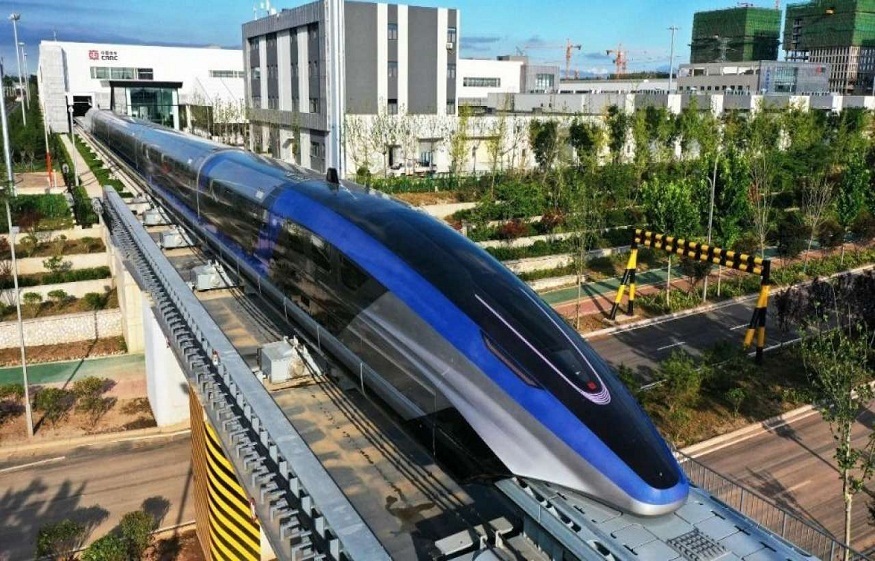The 5 Fastest Trains in the World

Generally, aeroplanes are touted as the fastest way to travel. But they are limited to air, and their availability is unreliable for day-to-day travel. On the other hand, trains have a reputation for incredible speed and unmatched reliability. Especially high-speed trains are astonishingly consistent and fast. They come with perks like easily accessible stations, quick boarding, affordable charges, etc.
Asia and Europe are the powerhouses in high-speed train technology. They have most of the world’s fastest trains. Major cities are connected with these train networks. Such trains regularly clock speeds of 200 mph.
Science behind Trains
Most trains operate on metal tracks with metal wheels. They usually have wheels that are joined together by a rigid axle. This technology is based on the decoupling of wheels. Trains are not ideal cylinders. They are altered at the edge to make them broader on the inside. When the train switches right or left on the track, the wheel’s diameter tends to change. On the other hand, as wheels are attached to an axle, they still rotate at the same rate. Adequately, this means that wheels will move varied distances per rotation.
The wheel surfaces are precisely designed in a way that when trains go about a corner, it sticks on the tracks. On the other hand, wheels and tracks are also designed to negate unwanted surface friction and resistance. The wheels that have to move a longer distance have a larger diameter, and the entire moving parts stay aligned. The higher the speed, the stronger the wheels should remain on the track.
Here are the five fastest trains in the world.
L0 Series Maglev (374 mph)
L0 Series Maglev is a Japanese high-speed train that is under development and testing. It holds the record for a rail vehicle, travelling at the max speed of 374 mph. It is still under development for regular commercial applications. It will be open in 2027 (at first Tokyo to Nagoya). When it is fully deployed, it will travel at the maximum functional speed of 310mph. It will only take just one hour to travel from Shinagawa Station (Tokyo) to Osaka.
TGV POS (357 mph)
France is one of the oldest powerhouses in high-speed train technology. In 2017, the TGV POS clocked the world record speed of 357 mph. It held the crown until Japan’s L0 Series Maglev broke the record in 2015. French rail company SNCF maintains this high-speed train. The rail network runs between eastern France, southern Germany and Paris. The top speed clocked during regular service is about 200 mph.
CRH380A Hexie (302 mph)
China’s CRH380A Hexie clocked a max speed of 302 mph during testing. In commercial services, it generally hits a maximum speed of 236 mph. It is one of the four super fast train series developed to deploy on the newly built high-speed network lines. CRH380A is the fastest among the lot; the other trains are CRH380C, CRH380D and CRH380B.
Shanghai Maglev (268 mph)
The Shanghai maglev is a magnetic levitation high-speed train that runs in and out of Shanghai, China. It is also known as the Shanghai Transrapid. It is the oldest operating commercial maglev and the fastest public electric train in the world. It recorded a max speed of 268 mph. It is also the very first commercial maglev hitting the rate of 268 mph. As this train is based on magnetic levitation technology, its physical structure is precisely designed to reduce dragforce more than surface friction. Like all other high-speed trains, a streamlined body is one of the most crucial aspects that tackle external air resistance.
HEMU-430X (262 mph)
HEMU-430X is the fastest train in South Korea. It was developed to run at a max speed of 267 mph, but it could only hit 262 mph (March 31, 2013). Even though it could not clock its expected speed, it allowed South Korea to become the world’s fourth country to engineer a train that travels over the speed of 261 mph.





